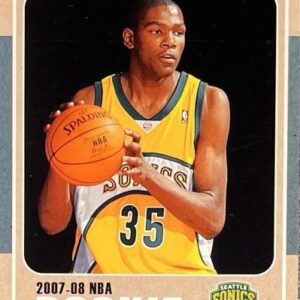To anyone casually strolling past a retail behemoth on a typical Friday morning, the sight of eager folks lining up isn’t just reminiscent of a hot new gadget release. Instead of tech enthusiasts, these queues are filled with aficionados of pocket monsters, each hoping to grab a sliver of the Pokémon Treasure Trove before it’s devoured by card clerics and resellers. Welcome to the carefully orchestrated dance of modern Pokémon Trading Card Game (TCG) collecting—a spectacle that mirrors the historical turbulence of the 1990s sports card surge and subsequent descent.
Once upon an innocent time not too far ago, Pokémon card collecting was a warm rekindling of childhood joys, where grown-ups furtively relived their youthful days by sifting through packs for that elusive Charizard. Before long, however, what began as a nostalgic nibble into the universe of Pokémon paraphernalia ballooned into full-blown consumer mania, beset by the frenzied ripples of a memory-laden tsunami.
Today’s Pokémon TCG landscape is segmented by seismic restock Fridays, which have turned aisle runs into contact sports. Collectors arrive with hope, but they find themselves tangled in kaleidoscopic chaos—jostling for position with resellers aiming to skyrocket their profits. These opportunistic resellers, often more interested in the almighty dollar than the electric allure of Pikachu, employ swiping tactics that could rival the slickest Thief in the Pokémon games.
The cycle spins incessantly: shelves are stripped moments after they’re replenished, and the aftermarket swells with products sold at prices designed to dent wallets. This has driven a wedge between the devoted collector and a bounty once easily accessible, creating an environment that’s both competitive and exclusive—often leaving young fans out in the cold or rummaging through vacant aisles.
In response, a seeming tsunami of product poured forth from The Pokémon Company’s presses, nearly drowning the market in booster packs, tins, and exclusive sets. The initial fervor, fueled perhaps by hard-to-find classics like the “Evolving Skies” and the glistening allure of “Crown Zenith,” could soon dissipate under this deluge. Take, for example, the tale of the “Van Gogh Pikachu” card—a would-be gem turned common pebble as its PSA 10s number into the tens of thousands, transforming a collectible into a cautionary tale.
What uncanny echoes we hear from the shadowy corridors of the past resonate intensely with today’s picture. The late ’80s to the early ’90s saw sports talk filled with tales of burgeoning card collections that promised future fortunes. Alas, that future wisped away like a summer dream when the value of these so-called rare cards plummeted faster than a Starly in strong winds. Driven by speculation, overproduction, and the eventual realization that rarity was merely a manufactured fantasy, collectors soon found themselves holding cardboard clippings worth less than the pages they turned in their binders.
So, when will today’s Pokémon TCG bubble burst—a reckoning that seems as certain as a Mewtwo’s glare? With expert collectors sounding the alarm, cautioning against unrestrained buying and urging a return to sobriety and sagacity, the signs loom large. The scalper’s sprawling credit-fueled saga must eventually meet its climax, likely via liquidation at the behest of stabilizing markets or declining card values, not unlike a Clefable’s fading Moonblast.
Collectors—wise to the inflated and the overly printed—might begin their own calculated retreat. As they scrutinize the landscape of Pokémon in their pursuit of authenticity and value, the market itself could dwindle into a somber reflection of its former bustling brilliance; a cautionary tale of rampant consumerism overshadowing genuine collectibility.
What remains then for the Pokémon world? Perhaps a return to moderation, where true scarcity replaces synthetic hype as the measure of a card’s worth. Those left in the wake might ponder lessons learned, reminded that while the collecting heart yearns for nostalgia, the mind must deftly negotiate the maze of supply, demand, and rarity to find enduring satisfaction.






